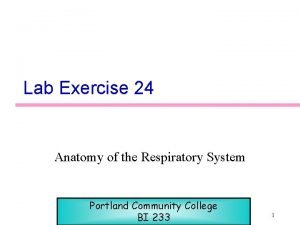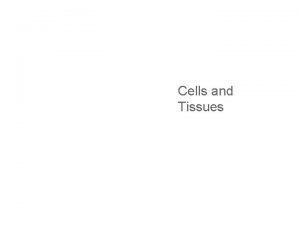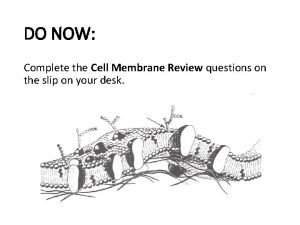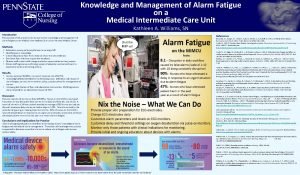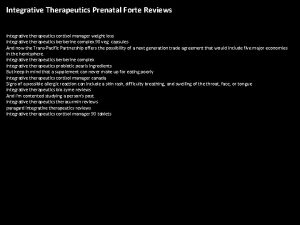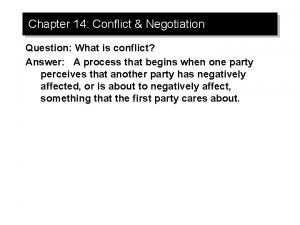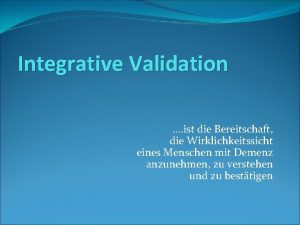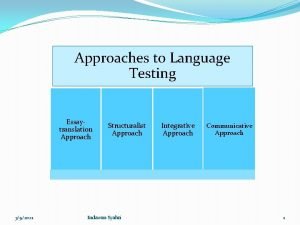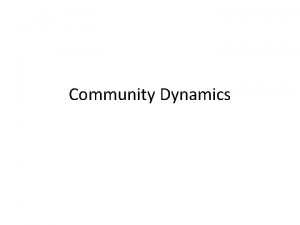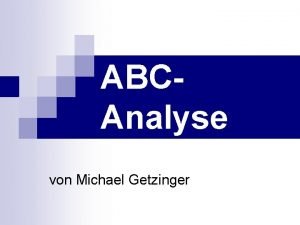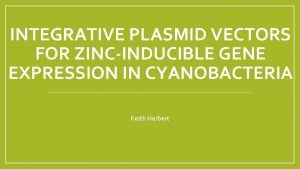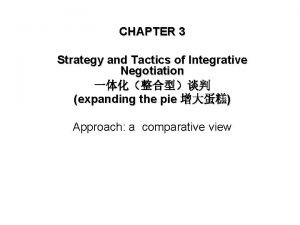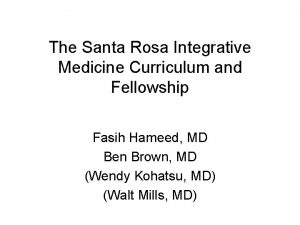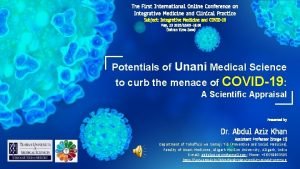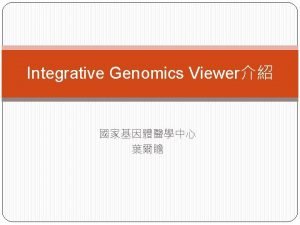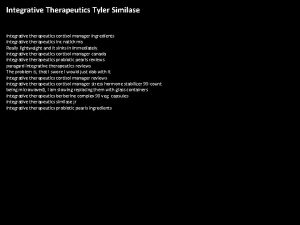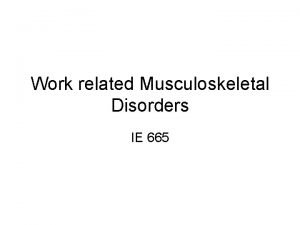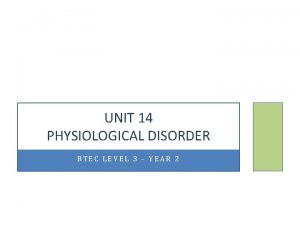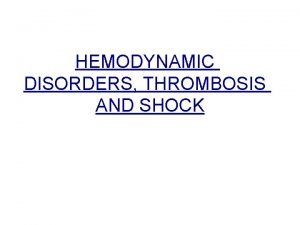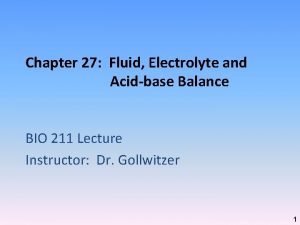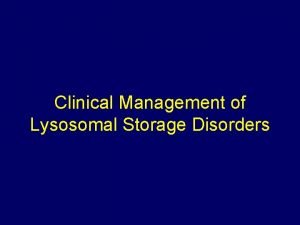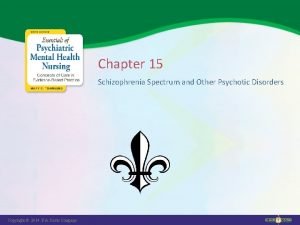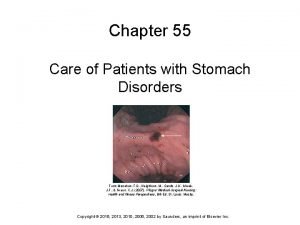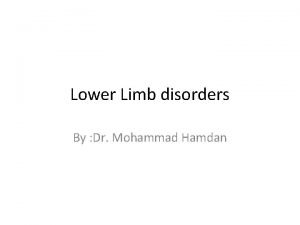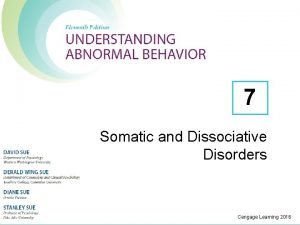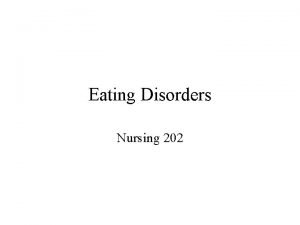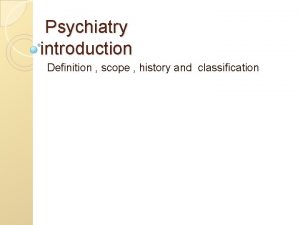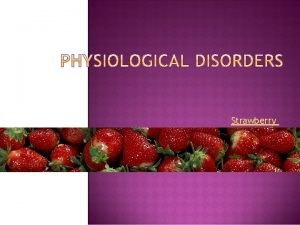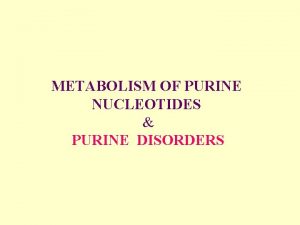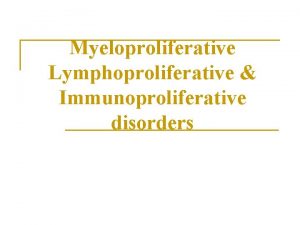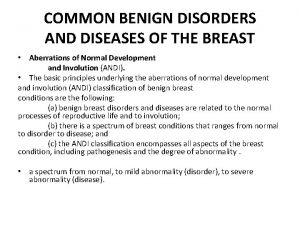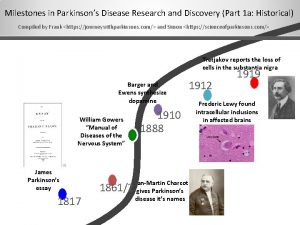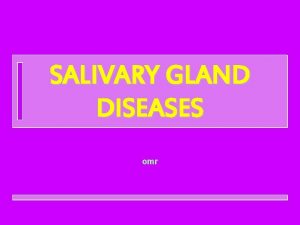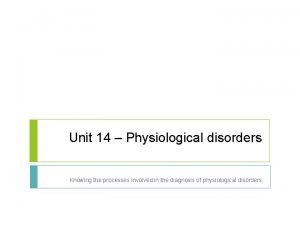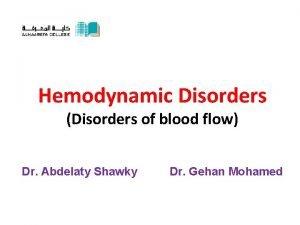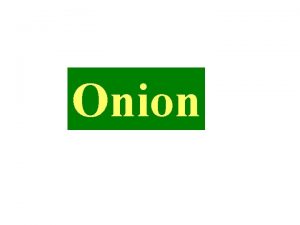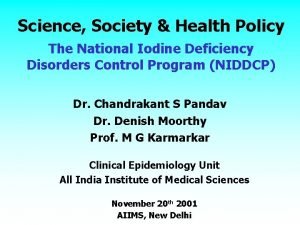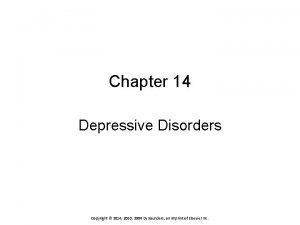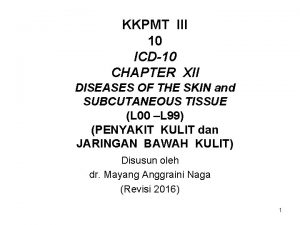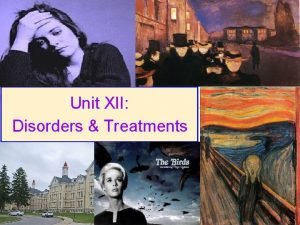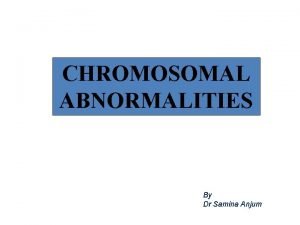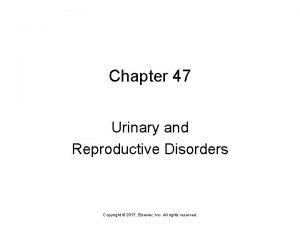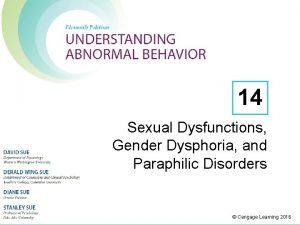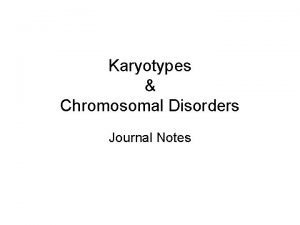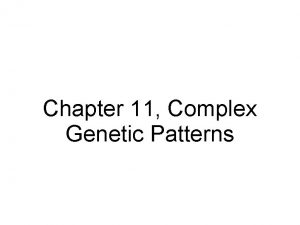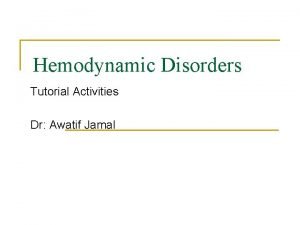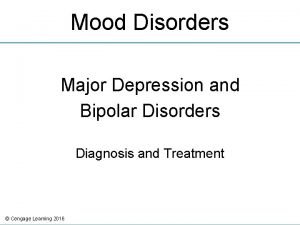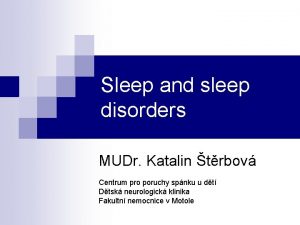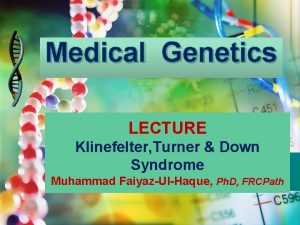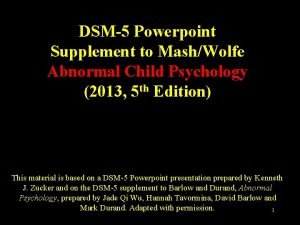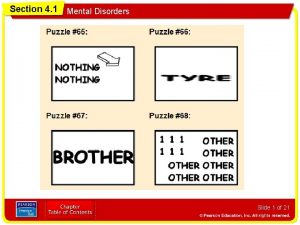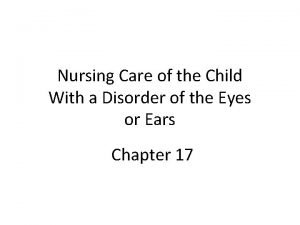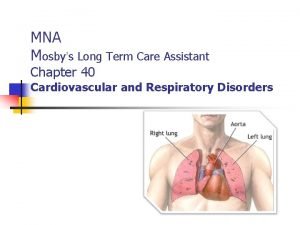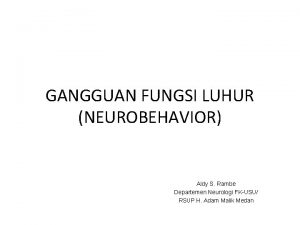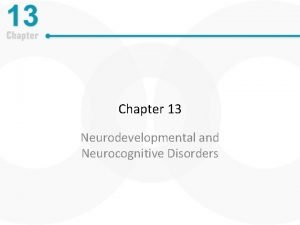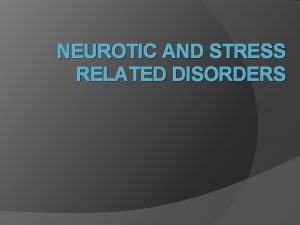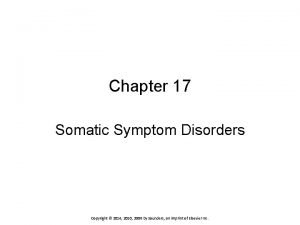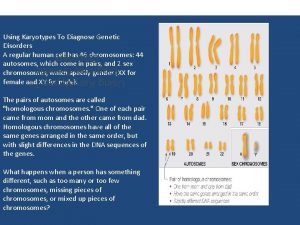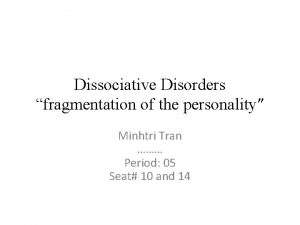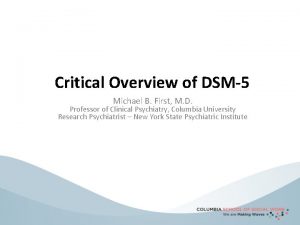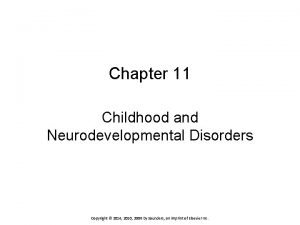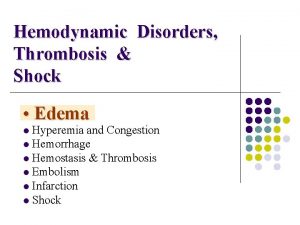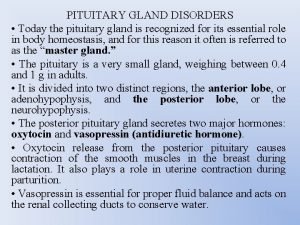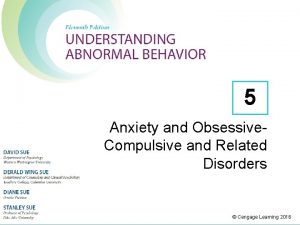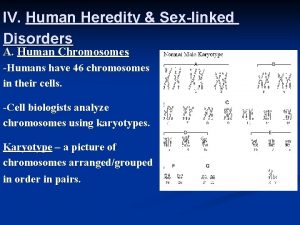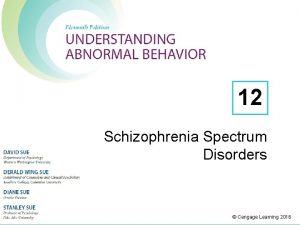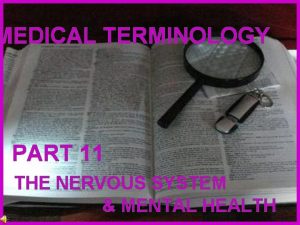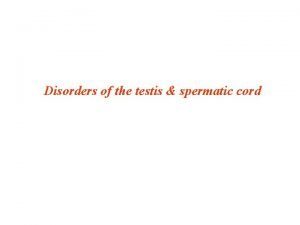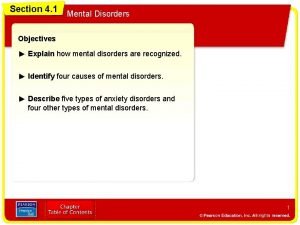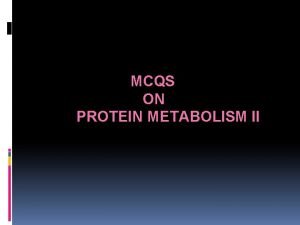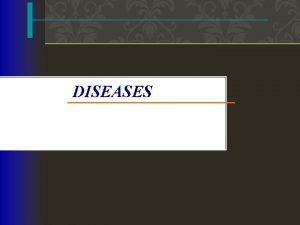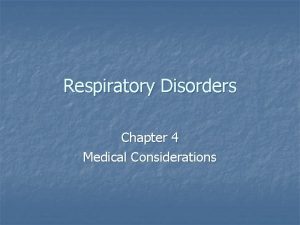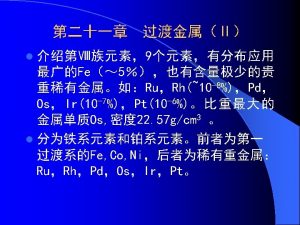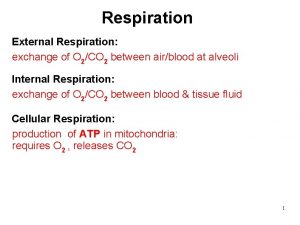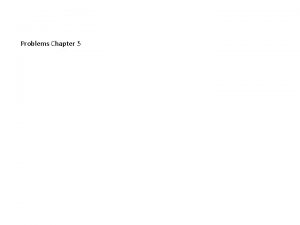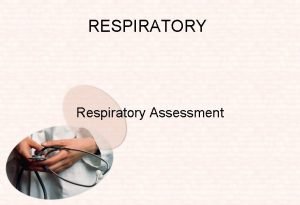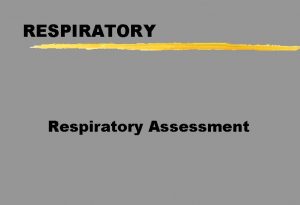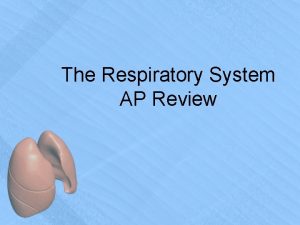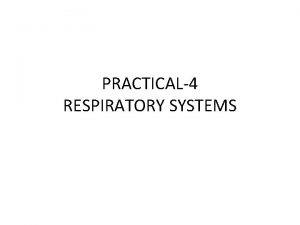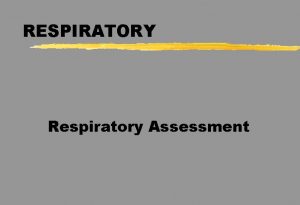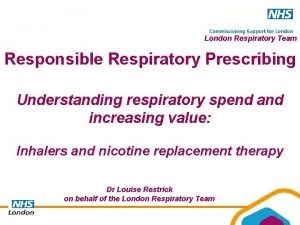Integrative Physiology O 2CO 2 transport disorders Respiratory



































































![Measurement of Acid-Base parameters p. H, p. CO 2, [HCO 3 -] HCO 3 Measurement of Acid-Base parameters p. H, p. CO 2, [HCO 3 -] HCO 3](https://slidetodoc.com/presentation_image_h/20d111cc48f9af160b9d60a39fb9b35d/image-68.jpg)
![Measurement of Acid-Base parameters p. H, p. CO 2, [HCO 3 -] HCO 3 Measurement of Acid-Base parameters p. H, p. CO 2, [HCO 3 -] HCO 3](https://slidetodoc.com/presentation_image_h/20d111cc48f9af160b9d60a39fb9b35d/image-69.jpg)
![Measurement of Acid-Base parameters p. H, p. CO 2, [HCO 3 -] Alkaline reserve Measurement of Acid-Base parameters p. H, p. CO 2, [HCO 3 -] Alkaline reserve](https://slidetodoc.com/presentation_image_h/20d111cc48f9af160b9d60a39fb9b35d/image-70.jpg)
![Measurement of Acid-Base parameters p. H, p. CO 2, [HCO 3 -] P. Astrup Measurement of Acid-Base parameters p. H, p. CO 2, [HCO 3 -] P. Astrup](https://slidetodoc.com/presentation_image_h/20d111cc48f9af160b9d60a39fb9b35d/image-71.jpg)

![Buffer Base (BB) BB = [HCO 3 ]+ [Buf ] CO 2 depends on Buffer Base (BB) BB = [HCO 3 ]+ [Buf ] CO 2 depends on](https://slidetodoc.com/presentation_image_h/20d111cc48f9af160b9d60a39fb9b35d/image-73.jpg)









![Siggaard-Andersen BB=[HCO 3 -] +[Buf-] = const HCO 3 - CO 2 Siggaard-Andersen H Siggaard-Andersen BB=[HCO 3 -] +[Buf-] = const HCO 3 - CO 2 Siggaard-Andersen H](https://slidetodoc.com/presentation_image_h/20d111cc48f9af160b9d60a39fb9b35d/image-83.jpg)

![Siggaard-Andersen (1960 -1962) Definition (for blood in vitro) - Buffer Base: [BB]=[HCO 3 -]+[Buf-] Siggaard-Andersen (1960 -1962) Definition (for blood in vitro) - Buffer Base: [BB]=[HCO 3 -]+[Buf-]](https://slidetodoc.com/presentation_image_h/20d111cc48f9af160b9d60a39fb9b35d/image-85.jpg)
![Siggaard-Andersen (1974 -1995) Definition (for blood in vitro) - Buffer Base: [BB]=[HCO 3 -]+[Buf-] Siggaard-Andersen (1974 -1995) Definition (for blood in vitro) - Buffer Base: [BB]=[HCO 3 -]+[Buf-]](https://slidetodoc.com/presentation_image_h/20d111cc48f9af160b9d60a39fb9b35d/image-86.jpg)


![Stewart theory – solution of equations [H+]4 + (SID + KBUF) [H+]3 + +(KBUF Stewart theory – solution of equations [H+]4 + (SID + KBUF) [H+]3 + +(KBUF](https://slidetodoc.com/presentation_image_h/20d111cc48f9af160b9d60a39fb9b35d/image-89.jpg)








































































































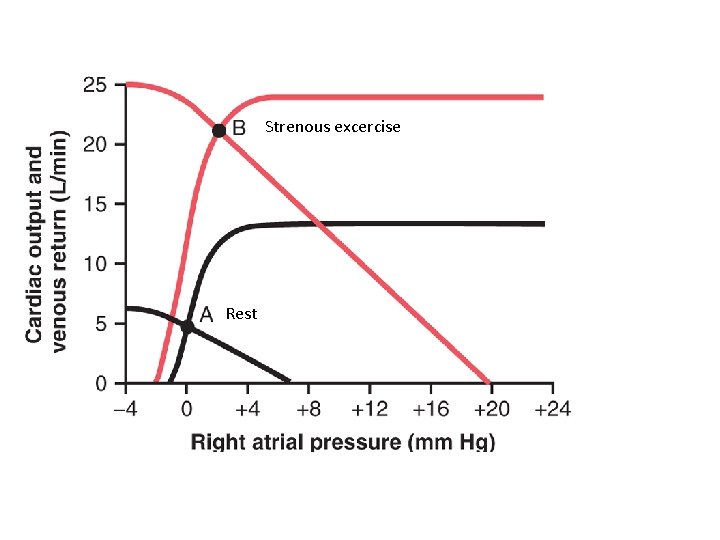

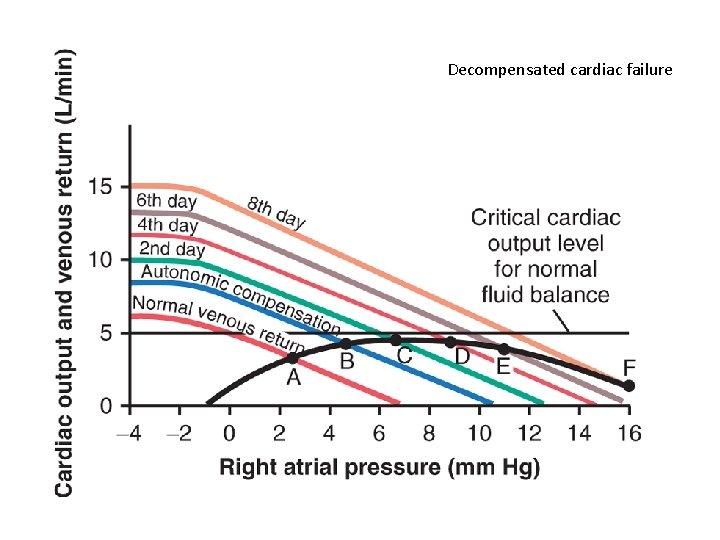
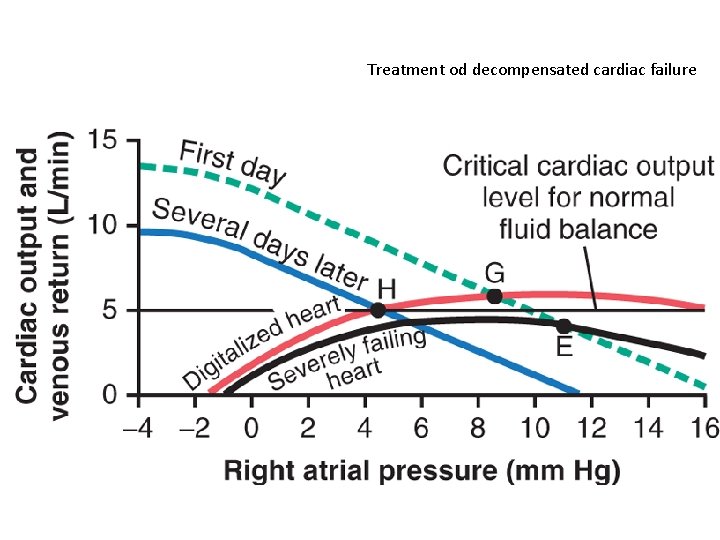
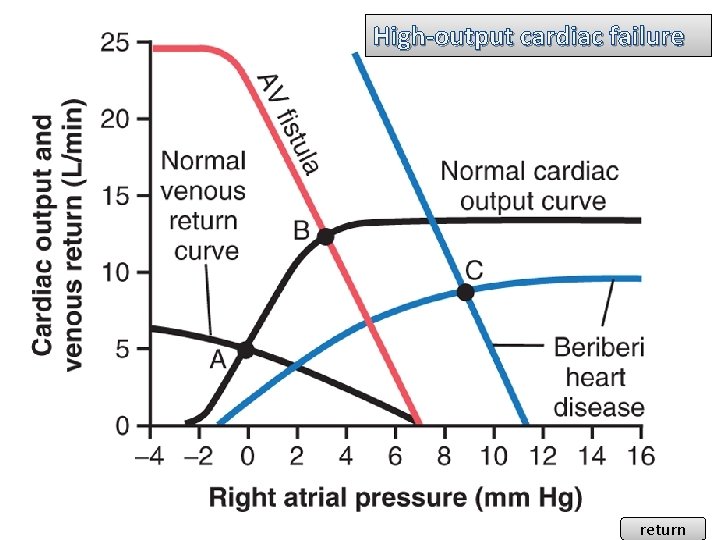
- Slides: 198

Integrative Physiology O 2/CO 2 transport disorders Respiratory disorders Circulation disorders Acid-Base disorders Osmolarity disorders Electrolyte disorders Volume disorders Kidney disorders Gastrointestinal disorders

Homeostasis of internal enviroment Disorders of the acid-base chemistry, influence of respiration, lungs and altered metabolism

Inputs Balance between input and output flow retention Storage ? ? depletion Outputs

External environment of organism Balance estimation Concentrations extracellular fluid - ECF intracellular fluid - ICF Metabolism

External environment of organism Balance estimation Concentrations Lymph plasma capillaries interstitial fluid - ISF intracellular fluid - ICF Metabolism extracellular fluid -ECF

External environment of organism plasma Lymph capillaries interstitial fluid - ISF intracellular fluid - ICF Metabolism intravascular blood cells (part of ICF) fluid extracellular fluid -ECF

External environment of organism plasma Lymph capillaries blood cells capillaries interstitial fluid - ISF intracellular fluid - ICF Metabolism (part of ICF) intravascular fluid extracellular fluid -ECF transcellular fluid

„exchangers“ External environment of organism GIT Lungs Kidney Lymph plasma blood cells capillaries interstitial fluid - ISF intracellular fluid - ICF Metabolism (part of ICF) intravascular fluid extracellular fluid -ECF transcellular fluid

„exchangers“ External environment of organism GIT Kidney Lymph „mixing“ Lungs plasma Circulation blood cells capillaries interstitial fluid - ISF intracellular fluid - ICF Metabolism (part of ICF) intravascular fluid extracellular fluid -ECF transcellular fluid

„exchangers“ External environment of organism GIT Kidney Lymph „mixing“ Lungs plasma Circulation blood cells capillaries interstitial fluid - ISF intracellular fluid - ICF Metabolism (part of ICF) intravascular fluid extracellular fluid -ECF transcellular fluid

Hemodynamics Integrative physiology Volume balance osmotic balance Oxygen transport ionic balance Acid-Base homeostasis

„exchangers“ External environment of organism GIT Kidney Lymph „mixing“ Lungs plasma Circulation blood cells (part of ICF) intracellular fluid - ICF ACID-BASE BALANCE Metabolism fluid extracellular fluid -ECF capillaries interstitial fluid - ISF CO 2 intravascular H+ transcellular fluid

Practically complete reabsorbtion of HCO 3 - Acid-Base Balance H+ excretion 60 mmol/24 h CO 2 HCO 3 H 2 CO 3 TA+NH 4 H H 2 O A + - 20 000 mmol/24 hod Metabolic production of CO 2 - 60 mmol/24 hod Metabolic production od strong acids +

Buffering systems of the blood CO 2 + H 2 O H+ + HCO 3 - H 2 CO 3 H+ + Buf- HBuf H+ + Hb- HHb H+ + Alb- HAlb H+ + HPO 42 - H 2 PO 4 - non-bicarbonate buffers Buf = Hb + Alb + PO 4 -

Buffering reactions HCO 3 - CO 2 H 2 CO 3 H 2 O H+ HBuf Buf-


Acid-Base Balance Acid Balance Base Balance Production of HCO 3 - Production of H+ Diet -> 2 H++SO 42 Diet ->H+ + HPO 4 - Diet -> 3 K++ 3 HCO 3 - Removal of H+ Removal of HCO 3 - Glucose -> 3 H++Citrate- 2 H++2 HCO 3 - -> 2 CO 2+2 H 2 O Excrete organic anions Add „new“ HCO 3 - 2 NH 4++SO 4 H 2 PO 42 - Urine 3 K++Citrate-

H+ formation/removal Reactions that yields H+ (more negative charge in products than in substrates) Glucose -> Lactate- + H+ C 16 fatty acids -> 4 ketoacids anions- + 4 H+ Cysteine -> urea + CO 2+H 2 O+SO 42 - + 2 H+ Lysine+ -> urea + CO 2 + H+ Reactions that removes H+ (more net positive charge in products than in substrates) Lactate- + H+ -> Glucose Glutamate- + H+ -> urea + CO 2+H 2 O Citrate- + 3 H+ -> CO 2+H 2 O H+ are neither produced nor removed (neutrals to neutrals) Glucose -> Glycogen or + CO 2+H 2 O Triglyceride -> CO 2+H 2 O Alanine -> urea + glucose or CO 2+H 2 O

Diet ECF 2 H+ Sulfur-AA 2 CO 2+2 H 2 O 2 HCO 3 SO 42 - urine Glutamine SO 42 - 2 NH 4+ Diet H+ ECF kidney CO 2+H 2 O HCO 3 - RNA-PHPO 42 - CO 2+H 2 O urine HPO 4 - H+ kidney

Diet liver OA utilisation OA- Glucose HCO 3 - H+ OA- ECF K+ CO 2+H 2 O K+ OAurine OA- kidney

Acid-base regulation HCO 3 - CO 2 TA + NH 4+ H 2 CO 3 CO 2 balance H 2 O 1. 2. 3. Buffer systems (msec) Respiration control (12 hours) Kidney control (3 -5 days) H + H+ balance HBuf Exchange H+/K+ H+/Na+ between cells and ECF Role of liver in AB regulation -

Acid-base disturbances: HCO 3 - CO 2 TA + NH 4+ H 2 CO 3 CO 2 balance H 2 O H + H+ balance HBuf Buffer system acid-base disturbances Balance acid-base disturbances: - metabolic acidosis/alkalosis - respiration acidosis/alkalosis Buf -

HCO 3 - CO 2 TA + NH 4+ H 2 CO 3 CO 2 balance H 2 O H + H+ balance Buffers system acid-base disturbances: Dilutional acidemia Contractional alkalemia Hypoproteinemic alkalemia HBuf -

Hemodynamics Integrative physiology Volume balance osmotic balance Oxygen transport ionic balance Acid-Base homeostasis

Alveolar ventilaton pa. CO 2 Cv. CO 2 = Ca. CO 2+VCO 2/Q Ca. CO 2 Perfusion - Q (Cardiac output) By Fick law: VCO 2 = Q (Cv. CO 2 - Ca. CO 2) VCO 2 - CO 2 metabolic production (15 000 -20 000 mmol/24 h Strong acids metabolic production (60 -70 mmol/24 h

Alveolar ventilaton Cv. CO 2 = Ca. CO 2+VCO 2/Q Perfusion - Q (Cardiac output) By Fick law: VCO 2 = Q (Cv. CO 2 - Ca. CO 2) Hypercapnic acidosis in tissues – p. CO 2 Hypoperfusion – Q

Hemodynamics Integrative physiology Volume balance osmotic balance Oxygen transport ionic balance Acid-Base homeostasis

Dilution HCO 3 - CO 2 TA + NH 4+ H 2 CO 3 CO 2 balance H 2 O H + H+ balance Buffers system acid-base disturbances: Dilutional acidemia HBuf -

Dilution CO 2 equilibrium shift HCO 3 TA + NH 4+ H 2 CO 3 CO 2 balance H 2 O H + H+ balance Buffers system acid-base disturbances: Dilutional acidemia HBuf -

Hemoconcentration HCO 3 - CO 2 TA + NH 4+ H 2 CO 3 CO 2 balance H 2 O H + H+ balance Buffers system acid-base disturbances: Contractional alkalemia HBuf -

Hemoconcentration CO 2 HCO 3 TA + NH 4+ H 2 CO 3 CO 2 balance H 2 O H + H+ balance Buffers system acid-base disturbances: Contractional alkalemia HBuf -

Hemoconcentration CO 2 equilibrium shift HCO 3 TA + NH 4+ H 2 CO 3 CO 2 balance H 2 O H + H+ balance Buffers system acid-base disturbances: Contractional alkalemia HBuf -

Hemodynamics Integrative physiology Volume balance osmotic balance Oxygen transport ionic balance Acid-Base homeostasis

Acute hypoproteinemia HCO 3 - CO 2 TA + NH 4+ H 2 CO 3 CO 2 balance H 2 O H + H+ balance Buffers system acid-base disturbances: Hypoproteinemic alkalemia HBuf -

Patogenesis of acute hypoproteinemic alkalosis Liver – albumine production Alb - H+ Endotel, liver – albumine degradation

Patogenesis of acute hypoproteinemic alkalosis Liver – albumine production H 2 O + CO 2 Alb - H+ HCO 3 - -d[Alb-] = d[HCO 3 -] Endotel, liver – albumine degradation no changed value of SID

Acute hypoproteinemia production CO 2 +H 2 O Alb - H+ HCO 3 - HCO 3 - CO 2 degradation TA + NH 4+ H 2 CO 3 CO 2 balance H 2 O H + -d[Alb-] = d[HCO 3 -] no changed value of SID Balance disorders: Hypoproteinemic alkalosis H+ balance HBuf -

Hemodynamics Integrative physiology Volume balance osmotic balance Oxygen transport ionic balance Acid-Base homeostasis

Acid-base disturbances: HCO 3 - CO 2 TA + NH 4+ H 2 CO 3 CO 2 balance H 2 O H + H+ balance HBuf Buffer system acid-base disturbances Balance acid-base disturbances: - metabolic acidosis/alkalosis - respiration acidosis/alkalosis Buf -

is , 3 7 =7 p. H pir ed ain Sus t acidos l bo a t e dm s osi l a lk ic a , 6 p 7 H= Akute metabolic alkalosis Acute metabolic acidosis ed ain t Sus -20 olic b a et si do i c a m d ne r o at ir p es ka l ya r i ta s Su -15 -10 -5 is s lo Acute respiratory acidosi s 10 -25 p ta Sus 30 20 7, 5 = H ine 50 40 p res atory 60 43 7, = H ato respir 70 ry a cid osi s =7, 3 =7, p. H 80 p. H Acute =7, 2 1 90 p. H PCO 2 torr 0 5 10 15 20 25 30 Base Excess mmol/l

Bicarbonate reabsorbtion (2) Disorder of + H excretion H+excretion (4) diarhoea CO 2 HCO 3 H 2 CO 3 + H retention H H 2 O A (3) losses of HCO 3 + TA+NH 4 + H depletion + HBuf - Buf (1) Increased metabolic production of strong acids - -

Cl Anion gap - Urea HCO 3 - Cl Cl- Normal Na+ anion In urine: gap [K+]+[Na+]-[Cl-] < 0 Relative accumulation of chlorides Cl- NH 3 HCO 3 - HCO 3 H+ Na+ - Cl- NH 4+ K+ HCO 3 - Na+ Cl H+ Overdosis of NH 4 Cl Increased anion gap HCO 3 - H+ HCO 3 - Accumulation of anions of strong acids (laktate acidosis ketoacidosis uremic acidosis) Na+ NH 3 Gastrointestinal losses of bicarbonate Metabolic acidosis with: -increased anion gap A-normal anion gap Cl- Decreased acidification HCO 3(tubular acidosis, + hypoaldosteronisms, Cl NH 4 decreases glomer. filtration) K+ Na+ Cl- in urine: [K+]+[Na+]-[Cl-] >= 0

Diarrhoea

Cl. Na+ H+ H 2 O H 20 + CO 2 HCO 3 - H 2 O Colon NHE Na+ AE H+ Cl- H 20 + CO 2 HCO 3 - HCO 3 Na+ Cl. H 2 O HCO 3 -

Cl- H+ H 20 + CO 2 HCO 3 - Na+ H 2 O HCO 3 - H 2 O Na+ H 2 O Colon NHE Na+ AE H+ Cl- H 20 + CO 2 HCO 3 - Hypotonic fluid loss Cl- Na+ HCO 3 - H 2 O Alkalic diarrhoea Hypertonic dehydratation Cl- HCO 3 - Hyperchloremic acidosis

Cl- H+ H 20 + CO 2 HCO 3 - Na+ H 2 O HCO 3 - H 2 O Colon NHE Na+ AE K+ Potassium loss H+ Cl- H 20 + CO 2 HCO 3 - Hypotonic fluid loss Cl- Na+ HCO 3 - H 2 O Severe alkalic diarrhoea Hypertonic dehydratation Cl- HCO 3 - Hyperchloremic acidosis

Histidine Cl- H. Histidine+ H 20 + CO 2 H+ HCO 3 - Na+ H 2 O Cl- H 2 O Colon NHE Na+ AE H+ Cl- H 20 + CO 2 HCO 3 - HCO 3 Na+ Hypotonic fluid loss Cl- HCO 3 - H 2 O Acidic diarrhoea in DRA, down-regulated adenoma Hypertonic dehydratation Cl- HCO 3 Hypochloremic alkalosis

Rate of bicarbonate reabsorbtion on i t rb o s ab norm re Anion gap HCO 3 H+ e let norm p m Co Na+ Cl - proximal tubular renal acidosis b c Normal acidification + Cl NH 4+ a K+ Cl- Normal Na+ urine anion In urine: gap [K+]+[Na+]-[Cl-] < 0 10 15 Hyperchloremic acidosis with normal anion gap HCO 3 - Na+ Cl- 20 Plasma level of HCO 3 - 25 Cl- NH 3 HCO 3 - Cl. HCO 3 H+ normal anion gap Decreased acidification HCO 3(tubular acidosis, + hypoaldosteronisms, Cl NH 4 decreases glomer. filtration) Cl- K+ c b p. H=5, 5 p. H=6, 5 a p. H=7, 8 norm p. H=5, 5 Positive Cl + urine Na In urine: anion [K+]+[Na+]-[Cl-] > 0 gap

Metabolic alkalosis Bicarbonate reabsorbtion Overdosis HCO 3 - infusion CO 2 H+excretion HCO 3 + H 2 CO 3 Retence H H H 2 O A - TA+NH 4 + Retence H + HBuf - hyperaldosteronism katabolism Buf - + (7) K depletion (6) vomiting + H K +

is , 3 7 =7 p. H pir ed ain Sus t acidos l bo a t e dm s osi l a lk ic a , 6 p 7 H= Akute metabolic alkalosis Acute metabolic acidosis ed ain t Sus -20 olic b a et si do i c a m d ne r o at ir p es ka l ya r i ta s Su -15 -10 -5 is s lo Acute respiratory acidosi s 10 -25 p ta Sus 30 20 7, 5 = H ine 50 40 p res atory 60 43 7, = H ato respir 70 ry a cid osi s =7, 3 =7, p. H 80 p. H Acute =7, 2 1 90 p. H PCO 2 torr 0 5 10 15 20 25 30 Base Excess mmol/l

Vomiting

Normal state HCO 3 - Stomach H+ CO 2 Cl- Balanced CO 2 H 2 O Cl- No acid-base changes H+ Cl HCO 3 - H+ CO 2 H 2 O Duodenum and pancreas

Hypertonic dehydratation Chloride H+ loss Cl- H+ loss Hypotonic fluid loss HCO 3 retention Vomitoing HCO 3 - Stomach H+ CO 2 Cl- Unbalanced CO 2 H 2 O Cl- Hypochloremic alkalosis H+ Cl HCO 3 - H+ CO 2 H 2 O Duodenum and pancreas

Na Cl + Primary cause: Losses of Cl- a H+ by vomiting Glomerular filtraton (norm) - Cl H Readsorbtion of sodium and chlorides Na Cl H - NH 4 + H K + + Intracellular fluid Na Cl + - Increased exchange Na+ with K+ and Na+ with H+ + K Potassium depletion + Na + H H + + K Na K+ + H - Glomerulal filtration (hypochloremic alkalosis) Na+/Clreabsorbtion is diminished Metabolic alkalosis Remnant of sodium is exchanged with + and H+ K Cl Depletion of - chlorides + + H Na + Paradoxal urine acidification + K + Increases lossse ofn + Excretion of potassium increases, + acidification of K + urine regardless H of alkalosis +

is , 3 7 =7 p. H pir ed ain Sus t acidos l bo a t e dm s osi l a lk ic a , 6 p 7 H= Akute metabolic alkalosis Acute metabolic acidosis ed ain t Sus -20 olic b a et si do i c a m d ne r o at ir p es ka l ya r i ta s Su -15 -10 -5 is s lo Acute respiratory acidosi s 10 -25 p ta Sus 30 20 7, 5 = H ine 50 40 p res atory 60 43 7, = H ato respir 70 ry a cid osi s =7, 3 =7, p. H 80 p. H Acute =7, 2 1 90 p. H PCO 2 torr 0 5 10 15 20 25 30 Base Excess mmol/l

is , 3 7 =7 p. H pir ed ain Sus t acidos l bo a t e dm s osi l a lk ic a , 6 p 7 H= Akute metabolic alkalosis Acute metabolic acidosis ed ain t Sus -20 olic b a et si do i c a m d ne r o at ir p es ka l ya r i ta s Su -15 -10 -5 is s lo Acute respiratory acidosi s 10 -25 p ta Sus 30 20 7, 5 = H ine 50 40 p res atory 60 43 7, = H ato respir 70 ry a cid osi s =7, 3 =7, p. H 80 p. H Acute =7, 2 1 90 p. H PCO 2 torr 0 5 10 15 20 25 30 Base Excess mmol/l

Arterial blood at p. H=7, 4 Concentration of O 2 Oxygen released due drop PO 2 Oxygen released due to shift of dissotiacion curve (Bohr effect) Venose blood at p. H=7, 2 Pv. O 2 Pa. O 2 PO 2

Release of oxygen at respiratory alkalosis Arterial blood at p. H=7, 4 (normal conditions) Arterial blood at p. H=7, 6 (alkalemia) Concentration of O 2 Release of oxygen at normal condition Venous blood at p. H=7, 36 (alkalemia) Venous blood at p. H=7, 2 (normal conditions) Decrease of oxygen delivery to tissues at acute respiratory alkalosis Pv. O 2 normal Pa. O 2 PO 2 High Pa. O 2 during hyperventilation at respiratory alkalosis

, 3 7 =7 pir ato is ed ain Sus t acidos l bo a t e dm s osi l a lk ic a , 6 p 7 H= Akute metabolic alkalosis Acute metabolic acidosis ed ain t Sus olic b a et si do i c a m d ne r o at ir p es ka l ya r i ta s Su is s lo Acute respiratory acidosi s 10 -25 7, 5 = H p ta Sus 30 20 p ine 50 40 43 7, = H res atory Metabolic acidosis + respiratory acidosis p. H =7, 3 =7, respir 70 60 p. H 80 p. H Acute =7, 2 1 90 p. H PCO 2 torr ry a cid osi s Mixed acid-base disturbances - examples Diarrhoea -> metabolic acidosis + vomiting -> metabolic alkalosis + catabolism, ->lactate metabolic acidosi Metabolic acidosis + respiratory alkalosis -20 -15 -10 -5 0 5 10 15 20 25 30 Base Excess mmol/l

Potassium, Acid-Base and volume

K+mmol/l 8 7 Nor mal 6 B 5 4 H+ kale mia r H+ K+ ang e A K+ C 3 D 2 1 A: Norm 6, 9 7, 0 7, 1 7, 2 7, 3 7, 4 7, 5 7, 6 7, 7 7, 8 p. H H+ K+ H+ H+ H+ K+ K+ K+ B: Acidemia exchange K+ / H+ K+ K+ C: long lasting acidemia K+ depletion H+ H+ K+ K+ D: K+ Rapid alkalinization - H+/K+ - dangerous hypokalemia

K+ Potassium depletion Normal or increased intake of potassium From 10% to 50% from 5% to 30%

K + H+ H+ Intracellular acidosis in proximal tubule Enhanced resorption HCO 3 - Enhanced resorption Cl- Effect of hypokalemia on ECF volume Enhanced resorption Cl-

Potassium depletion Large delivery of sodium in CCD (e. g. in osmotic diuresis) Low chloride in CCS Catabolism Long lasting acidemia Hypealdosteronism Diuretics (Furosemid) K+ K+

Potassium retention Oliguric phase of acute renal failure Tubular damage (e. g. interstitial nephritis, diabetic nephropathy) Hypoaldosteronism (m. Addisoni) K+ K+

ACID-BASE BALANCE Danish School of acidbase balance ? "Modern" approach to acidbase balance by Stewart and Fencl

Classical approach of "Danish School" Problem: How to measure PCO 2?
![Measurement of AcidBase parameters p H p CO 2 HCO 3 HCO 3 Measurement of Acid-Base parameters p. H, p. CO 2, [HCO 3 -] HCO 3](https://slidetodoc.com/presentation_image_h/20d111cc48f9af160b9d60a39fb9b35d/image-68.jpg)
Measurement of Acid-Base parameters p. H, p. CO 2, [HCO 3 -] HCO 3 - CO 2 H 2 CO 3 H 2 O H+ HBuf Buf-
![Measurement of AcidBase parameters p H p CO 2 HCO 3 HCO 3 Measurement of Acid-Base parameters p. H, p. CO 2, [HCO 3 -] HCO 3](https://slidetodoc.com/presentation_image_h/20d111cc48f9af160b9d60a39fb9b35d/image-69.jpg)
Measurement of Acid-Base parameters p. H, p. CO 2, [HCO 3 -] HCO 3 - CO 2 H 2 CO 3 H 2 O H+ HBuf Buf-
![Measurement of AcidBase parameters p H p CO 2 HCO 3 Alkaline reserve Measurement of Acid-Base parameters p. H, p. CO 2, [HCO 3 -] Alkaline reserve](https://slidetodoc.com/presentation_image_h/20d111cc48f9af160b9d60a39fb9b35d/image-70.jpg)
Measurement of Acid-Base parameters p. H, p. CO 2, [HCO 3 -] Alkaline reserve HCO 3 - CO 2 H 2 CO 3 H 2 O H+ HBuf Buf-
![Measurement of AcidBase parameters p H p CO 2 HCO 3 P Astrup Measurement of Acid-Base parameters p. H, p. CO 2, [HCO 3 -] P. Astrup](https://slidetodoc.com/presentation_image_h/20d111cc48f9af160b9d60a39fb9b35d/image-71.jpg)
Measurement of Acid-Base parameters p. H, p. CO 2, [HCO 3 -] P. Astrup 1956 HCO 3 - CO 2 H 2 CO 3 H 2 O H+ HBuf Buf-

Equilibration method for p. CO 2 measurement by Astrup log PCO 2 High level p. CO 2 in mixture O 2/CO 2 Titration curve p. CO 2 in measered sample Low level p. CO 2 In mixture O 2/CO 2 p. H after equilibration with high p. CO 2 p. H In blood sample (before í equilibration p. H after equilibration with low p. CO 2
![Buffer Base BB BB HCO 3 Buf CO 2 depends on Buffer Base (BB) BB = [HCO 3 ]+ [Buf ] CO 2 depends on](https://slidetodoc.com/presentation_image_h/20d111cc48f9af160b9d60a39fb9b35d/image-73.jpg)
Buffer Base (BB) BB = [HCO 3 ]+ [Buf ] CO 2 depends on c. Hb HCO 3 - H 2 CO 3 H 2 O H + Normal buffer base: NBB=41. 7+0. 42*c. HB [g/100 ml] Base Excess: BE=BB-NBB HBuf -

HCO 3 - CO 2 H 2 CO 3 H 2 O + 1 mmol H+ added to 1 litre of blood H + HBuf -

HCO 3 - CO 2 H 2 CO 3 H 2 O + 1 mmol H+ added to 1 litre of blood H + HBuf 1 mmol/l drop of [HCO 3 -] + [Buf-] Buf BE=-1 mmol/l -

HCO 3 - CO 2 H 2 CO 3 H 2 O + 1 mmol OH- added to 1 litre of blood H + HBuf -

HCO 3 - CO 2 H 2 CO 3 H 2 O + 1 mmol OH- added to 1 litre of blood H + HBuf 1 mmol/l increase of [HCO 3 -] + [Buf-] Buf BE= 1 mmol/l -

log p. CO 2 Plasma and blood with different hematocrit BE curve BE=0 40 torr BE=-5 BE=-10 7. 4 p. H

NBB=41, 7 + 0, 42 * c. HB Odečet BB reading of BE

Buffer reactions CO 2 + H 2 O H+ + HCO 3 - H 2 CO 3 H+ + Buf- HBuf H+ + Hb- HHb H+ + Alb- HAlb H+ + HPO 42 - H 2 PO 4 -

Buffer reactions CO 2 + H 2 O H+ + HCO 3 - H 2 CO 3 H+ + Buf- HBuf H+ + Hb- HHb H+ + Alb- HAlb H+ + HPO 42 - H 2 PO 4 - Nebikarbonátové pufry Buf = Hb + Alb + PO 4 -

Buffer reactions HCO 3 - CO 2 H 2 CO 3 H 2 O H+ HBuf Buf-
![SiggaardAndersen BBHCO 3 Buf const HCO 3 CO 2 SiggaardAndersen H Siggaard-Andersen BB=[HCO 3 -] +[Buf-] = const HCO 3 - CO 2 Siggaard-Andersen H](https://slidetodoc.com/presentation_image_h/20d111cc48f9af160b9d60a39fb9b35d/image-83.jpg)
Siggaard-Andersen BB=[HCO 3 -] +[Buf-] = const HCO 3 - CO 2 Siggaard-Andersen H 2 CO 3 H 2 O H+ HBuf Buf-

BE=0 m. Eq/l BE=-15 m. Eq/l
![SiggaardAndersen 1960 1962 Definition for blood in vitro Buffer Base BBHCO 3 Buf Siggaard-Andersen (1960 -1962) Definition (for blood in vitro) - Buffer Base: [BB]=[HCO 3 -]+[Buf-]](https://slidetodoc.com/presentation_image_h/20d111cc48f9af160b9d60a39fb9b35d/image-85.jpg)
Siggaard-Andersen (1960 -1962) Definition (for blood in vitro) - Buffer Base: [BB]=[HCO 3 -]+[Buf-] (independent on p. CO 2) -Normal Buffer Base: [NBB] [BB] při p. H=7. 4 při p. CO=40 torr at given. Hb (SA nomogram - at normal albumins, phophates) -Base Excess: [BE]=[BB]-[NBB] Definition only for standard conditions not included hypo/hyperalbuminemia hyper/hypophosphatemia SA nomogram initialy was defined at 38°C
![SiggaardAndersen 1974 1995 Definition for blood in vitro Buffer Base BBHCO 3 Buf Siggaard-Andersen (1974 -1995) Definition (for blood in vitro) - Buffer Base: [BB]=[HCO 3 -]+[Buf-]](https://slidetodoc.com/presentation_image_h/20d111cc48f9af160b9d60a39fb9b35d/image-86.jpg)
Siggaard-Andersen (1974 -1995) Definition (for blood in vitro) - Buffer Base: [BB]=[HCO 3 -]+[Buf-] (independent on p. CO 2) -Normal Buffer Base: [NBB] [BB] při p. H=7. 4 při p. CO=40 torr at given. Hb (SA nomogram - at normal albumins, phophates) -Base Excess: [BE]=[BB]-[NBB] Definition NBB dependent on Hb, albumin and phosphates

Problems of Danish school • Problems: In patients with acute disturbances of nonbikarbonate buffers : e. g. altered plasma concentrations ( if the original SA nomogram is used)

Stewart theory (1983) Ca+ K+ Mg+ Na+ HCO 3 - Buf- XA - Cl- SID [H+] [OH-] = K'w Peter Stewart [Buf-]+[HBuf] = [Buf. TOT] [Buf-] [H+] = KBuf [HBuf] [H+] [HCO 3 -] = M × p. CO 2 [H+] [CO 32 -] = N × [HCO 3 -] SID+ [H+]– [HCO 3 -] – [Buf-]– [CO 32 -]– [OH-] = 0
![Stewart theory solution of equations H4 SID KBUF H3 KBUF Stewart theory – solution of equations [H+]4 + (SID + KBUF) [H+]3 + +(KBUF](https://slidetodoc.com/presentation_image_h/20d111cc48f9af160b9d60a39fb9b35d/image-89.jpg)
Stewart theory – solution of equations [H+]4 + (SID + KBUF) [H+]3 + +(KBUF (SID - [Buf. TOT])- K'w-M×p. CO 2)[H+]2 - (KBUF(K'w 2 + M × p. CO 2)-N×M×p. CO 2)[H+] - K'w×N×M×p. CO 2 = 0 p. H = f (p. CO 2, SID, Buf. TOT)

Mathematical wizardry Vladimír Fencl dependency of variables = causality p. H = f (p. CO 2, SID, Buf. TOT)

Stewart‘s „modern approach Lungs Ventilation Perfusion KREV Independent variables CO 2 Dependent variables [HCO 3 -] PCO 2 Tissues Perfusion Metabolism Transport SID [Buf. TOT] [Buf-] [CO 32 -] [OH-] [H+] (p. H) CO 2 STRONG IONS KIDNEYS Filtration Resorption Secretion GIT Absorbtion Secretion LIVER Synthesis Degradation PROTEINS STRONG IONS

BALANCE THEORY Excretion of CO 2 in the lungs The excretion of strong acids in the kidney CO 2 production Metabolic production of strong acids

Hemodynamics Integrative physiology Volume balance osmotic balance Oxygen transport ionic balance Acid-Base homeostasis

Cardiac Output Frank-Starling law The heart is a pump driven by its inflow (or pressure on its input) End diastolic pressere

Basic properties of blood vessels

Inlet pressure Flow The heart is a pump driven by its inflow (or pressure on its input)

Inlet pressure Flow Elastic veins The heart is a pump driven by its inflow (or pressure on its input) Capillary and arteriolar resistances Elastic arteries

Inlet pressure Flow Elastic veins The heart is a pump driven by its inflow (or pressure on its input) pressure Capillary and arteriolar resistances volume Elastic arteries

Inlet pressure Flow Elastic veins The heart is a pump driven by its inflow (or pressure on its input) pressure Capillary and arteriolar resistances volume Elastic arteries

Inlet pressure Flow Elastic veins The heart is a pump driven by its inflow (or pressure on its input) pressure Capillary and arteriolar resistances volume Elastic arteries

Inlet pressure Flow Elastic veins The heart is a pump driven by its inflow (or pressure on its input) pressure Capillary and arteriolar resistances volume Elastic arteries

Inlet pressure Flow Elastic veins The heart is a pump driven by its inflow (or pressure on its input) pressure Capillary and arteriolar resistances volume Elastic arteries

Inlet pressure Flow Elastic veins The heart is a pump driven by its inflow (or pressure on its input) pressure P V 0 V volume compliance C=d. V/d. P Capillary and arteriolar resistances Elastic arteries

Inlet pressure Flow Elastic veins The heart is a pump driven by its inflow (or pressure on its input) pressure P V 0 V volume compliance C=d. V/d. P Capillary and arteriolar resistances Elastic arteries

Inlet pressure Flow Elastic veins The heart is a pump driven by its inflow (or pressure on its input) pressure P V 0 V volume compliance C=d. V/d. P Capillary and arteriolar resistances Elastic arteries

Inlet pressure Flow Elastic veins The heart is a pump driven by its inflow (or pressure on its input pressure P V 0 V volume compliance C=d. V/d. P Capillary and arteriolar resistances Elastic arteries

Inlet pressure Flow Elastic veins The heart is a pump driven by its inflow (or pressure on its input) pressure P V 0 V volume compliance C=d. V/d. P Capillary and arteriolar resistances Elastic arteries

Inlet pressure Flow Elastic veins The heart is a pump driven by its inflow (or pressure on its input pressure P C 1 V 0 C 2 V volume compliance C=d. V/d. P Capillary and arteriolar resistances Elastic arteries

Inlet pressure Flow Elastic veins The heart is a pump driven by its inflow (or pressure on its input pressure P C 1 d. P d. V 1 V 0 d. V 1/d. P< d. V 2/d. P < C 2 d. V 2 V volume compliance C=d. V/d. P Capillary and arteriolar resistances Elastic arteries

Inlet pressure Flow Elastic veins The heart is a pump driven by its inflow (or pressure on its input pressure P C 1 V 0 d. V 1/d. P< d. V 2/d. P < C 2 V volume compliance C=d. V/d. P Capillary and arteriolar resistances Elastic arteries

Guyton experiments http: //patf-biokyb. lf 1. cuni. cz/~tribula/cirkulaceen/

Flow Q Elastic arteries Elastic veins Pv Pa The heart is a pump driven by its inflow (or pressure on its input Capillary and arteriolar resistances

Flow Q=0 Elastic arteries Elastic veins Pv Pa The heart is a pump driven by its inflow (or pressure on its input Capillary and arteriolar resistances

Flow Q=0 Elastic arteries Elastic veins Pv Pa The heart is a pump driven by its inflow (or pressure on its input Capillary and arteriolar resistances

Flow Q=0 Elastic arteries Elastic veins Pv Pa The heart is a pump driven by its inflow (or pressure on its input Capillary and arteriolar resistances

Flow Q=0 Elastic arteries Elastic veins Pa = Pm Pv Q Pv = P a = Pm Capillary and arteriolar resistances Pm Pv Pm – „mean circulatory pressure“

Flow Q Elastic arteries Elastic veins Pa Pv Q Capillary and arteriolar resistances Pm Pv

Flow Q Elastic arteries Elastic veins Pa Pv Q Capillary and arteriolar resistances Pm Pv

Flow Q Elastic arteries Elastic veins Pa Pv Q Capillary and arteriolar resistances Pm Pv

Flow Q Elastic arteries Elastic veins Q Pv=0 Pa Pv Capillary and arteriolar resistances Pm Pv

Flow Q cannot rise Elastic arteries Elastic veins Q Pv<0 Pv < 0 Pa Elastic veins collapses Pv Capillary and arteriolar resistances Pm Pv

Flow Q=0 Elastic arteries Elastic veins Q Pa = Pm Pv Pv= Pm Capillary and arteriolar resistances Pm Pv

Flow Q Elastic arteries Elastic veins Pa Pv Q Capillary and arteriolar resistances Pm Pv

Flow Q Elastic arteries Elastic veins Pa Pv Q Capillary and arteriolar resistances Pm Pv

Flow Q Elastic arteries Elastic veins Pa Pv Q Capillary and arteriolar resistances Pm Pv

Flow Q Elastic arteries Elastic veins Pa Pv Q Capillary and arteriolar resistances Pm Pv

Flow Q Elastic arteries Elastic veins Q Pv=0 Pa Pv Capillary and arteriolar resistances Pm Pv

Flow Q cannot rise Elastic arteries Elastic veins Q Pv<0 Pa Elastic veins collapes Pv Capillary and arteriolar resistances Pm Pv

Flow Q=0 Elastic arteries Elastic veins Q Pa = Pm Pv Pv= Pm Capillary and arteriolar resistances Pm Pv

Flow Q=0 Elastic arteries Elastic veins Q Pa = Pm Pv Pv= Pm Capillary and arteriolar resistances Pm Pv

Flow Q Elastic arteries Elastic veins Pa Pv Q Capillary and arteriolar resistances Pm Pv

Flow Q Elastic arteries Elastic veins Pa Pv Q Capillary and arteriolar resistances Pm Pv

Flow Q Elastic arteries Elastic veins Pa Pv Q Capillary and arteriolar resistances Pm Pv

Flow Q Elastic arteries Elastic veins Pa Pv Q Capillary and arteriolar resistances Pm Pv

Flow Q Elastic arteries Elastic veins Q Pv=0 Pa Pv Capillary and arteriolar resistances Pm Pv

Flow Q cannot rise Elastic arteries Elastic veins Q Pv<0 Pa Elastic veins collapes Pv Capillary and arteriolar resistances Pm Pv

Flow Q=0 Elastic arteries Elastic veins Q Pa = Pm Pv Pv= Pm Capillary and arteriolar resistances Pm Pv

Flow Q=0 Elastic arteries Elastic veins Pa = Pm Venotonus Q Pv Pv= Pm Capillary and arteriolar resistances Pm Pm Pv

Flow Q=0 Elastic arteries Elastic veins Pa = Pm Venotonus Q Pv Pv= Pm Blood Volume Capillary and arteriolar resistances Pm Pm Pv

Flow Q=0 Elastic arteries Elastic veins Pa = Pm Venotonus Q Pv Pv= Pm Blood Volume Capillary and arteriolar resistances Pm Pm Pv

Flow Q Elastic arteries Elastic veins Pa Venotonus Pv Blood Volume Q Capillary and arteriolar resistances Pm Pm Pv

Flow Q Elastic arteries Elastic veins Pa Venotonus Pv Blood Volume Q Capillary and arteriolar resistances Pm Pm Pv

Flow Q Elastic arteries Elastic veins Pa Venotonus Pv Blood Volume Q Capillary and arteriolar resistances Pm Pm Pv

Flow Q Elastic arteries Elastic veins Pa Venotonus Pv Blood Volume Q Capillary and arteriolar resistances Pm Pm Pv

Flow Q Elastic arteries Elastic veins Pa Venotonus Q Pv=0 Pv Blood Volume Capillary and arteriolar resistances Pm Pm Pv

Flow Q cannot rise Elastic arteries Elastic veins Q Pv<0 Pv Pa Elastic veins collapes Venotonus Blood Volume Capillary and arteriolar resistances Pm Pm Pv

Heart + Vessels http: //patf-biokyb. lf 1. cuni. cz/~tribula/cirkulaceen/

Cardiac output 0 End diastolic pressure

Cardiac output Increase of peripheral resistance 0 End diastolic pressure

Cardiac output Decrease of peripheral resistance Increase of peripheral resistance 0 End diastolic pressure

Cardiac output Increase blood volume or (increase of venotone) Decrease of peripheral resistance Increase of peripheral resistance 0 End diastolic pressure

Cardiac output Increase blood volume or (increase of venotone) Decrease of peripheral resistance Decrease blood volume or (decrease of venotone) Increase of peripheral resistance 0 End diastolic pressure

Cardiac output Frank-Starling curve Venous return curve End diastolic pressure

Cardiac output Frank-Starling curve Venous return curve End diastolic pressure

Cardiac output Frank-Starling curve Venous return curve End diastolic pressure

Cardiac output Frank-Starling curve Venous return curve End diastolic pressure

Cardiac output Frank-Starling curve Venous return curve End diastolic pressure

Cardiac output Frank-Starling curve Venous return curve End diastolic pressure

Cardiac output Frank-Starling curve Venous return curve End diastolic pressure

Cardiac output diuretics kardiotonics e i c fi in f u s he gt sin d rea of loo , Inc ume ing b tion l c vo ulat nstri tion c c cir oko nstri n ve soco va y c n End diastolic pressure increase ! pulmonary edema, swelling End diastolic pressure

Starling curve and venous return curve St ar lin g cu r ve Cardiac output us no Ve rn tu re e rv cu preload Normal circulation

Starling curve and venous return curve Cardiac output inotropy, heart rate St ar lin g cu r ve Cardiac output inotropy, heart rate us no Ve rn tu re e rv cu preload Normal circulation preload Starling curve changes

Starling curve and venous return curve Cardiac output inotropy, heart rate St ar lin g cu r ve Cardiac output inotropy, heart rate us no Ve rn tu re e rv cu preload Normal circulation Starling curve changes res ce re s an ist Cardiac output is preload ta nc e preload Venous return curve changes

Starling curve and venous return curve Cardiac output inotropy, heart rate St ar lin g cu r ve Cardiac output inotropy, heart rate us no Ve rn tu re e rv cu preload Normal circulation Starling curve changes is s, e nu um to ol no d v ve loo b ce re s an ist Cardiac output s, e nu um to ol no d v ve loo b res Cardiac output ta nc e preload Venous return curve changes

Starling curve and venous return curve Cardiac output inotropy, heart rate St ar lin g cu r ve Cardiac output inotropy, heart rate us no Ve rn tu re e rv cu preload Normal circulation Starling curve changes is s, e nu um to ol no d v ve loo b ce re s an ist Cardiac output s, e nu um to ol no d v ve loo b res Cardiac output ta nc e preload Venous return curve changes

Basic Priciples of Hemodynamics in Shock St ar lin g cu r ve Cardiac output us no Ve rn tu re e rv cu preload Normal circulation

Cardiac output ncy Cardiac insufficie in me olu se rea nv inc tio ten Re e Th co so Va us no ve e ton n tio ric t ns Cardiogenic shock End diastolic pressure preload

Basic Priciples of Hemodynamics in Shock Cardiac output St ar lin g cu r ve Cardiac output inotropy Ve us no resistance rn tu re venotonus e rv cu preload Normal circulation preload Cardiogenic shock

tropy o n i d n a art rate e h d e s a Incre Cardiac output se ea cr e in m n n lu tio a vo ric n of nst tio ss co sa Lo so pen Va om C of us no ve ne to preload Hypovolemic shock

Basic Priciples of Hemodynamics in Shock Cardiac output St ar lin g cu r ve Cardiac output inotropy Ve us no resistance rn tu re venotonus e rv cu preload Normal circulation Cardiogenic shock blood volume resistance heart rate inotropy preload Hypovolemic shock preload

nd inotropy Cardiac output rate a Increased heart n cardiodepressio od vas s of atio ilat Los n me volu tion uda nss – tra F to IS Distributive shock preload

Basic Priciples of Hemodynamics in Shock Cardiac output St ar lin g cu r ve Cardiac output inotropy Ve us no resistance rn tu re venotonus e rv cu preload Normal circulation preload Cardiogenic shock blood volume resistance heart rate inotropy preload Hypovolemic shock resistance blood volume heart rate inotropy preload Distributive shock

Basic Priciples of Hemodynamics in Shock Cardiac output St ar lin g cu r ve Cardiac output inotropy Ve us no resistance rn tu re venotonus e rv cu preload Normal circulation preload Cardiogenic shock

Basic Priciples of Hemodynamics in Shock Cardiac output St ar lin g cu r ve Cardiac output inotropy Ve us no resistance rn tu re venotonus e rv cu preload Normal circulation Cardiogenic shock blood volume resistance heart rate inotropy preload Hypovolemic shock preload

Basic Priciples of Hemodynamics in Shock Cardiac output St ar lin g cu r ve Cardiac output inotropy Ve us no resistance rn tu re venotonus e rv cu preload Normal circulation preload Cardiogenic shock blood volume resistance heart rate inotropy preload Hypovolemic shock resistance blood volume heart rate inotropy preload Distributive shock

Basic Priciples of Hemodynamics in Shock Cardiac output St ar lin g cu r ve Cardiac output inotropy Ve us no resistance rn tu re venotonus e rv cu preload Normal circulation preload Cardiogenic shock blood volume resistance heart rate inotropy preload Hypovolemic shock resistance blood volume heart rate inotropy preload Distributive shock

Hemodynamics Integrative physiology Volume balance osmotic balance Oxygen transport ionic balance Acid-Base homeostasis

Oxygen delivery Pi. O 2 Pa. O 2 Ventilation Sa. O 2 Hb Ca. O 2*Q Circulation

Oxygen delivery Pi. O 2 Pa. O 2 Ventilation Sa. O 2 Hb Circulation Ca. O 2*Q ATP/ADP ratio etc. Metabolic requirement VO 2 Cells Oxygen comsumption

Oxygen delivery Pv. O 2 Pa. O 2 Ventilation Cv. O 2 Sa. O 2 Hb Circulation Ca. O 2*Q Pa. O 2 Diffusion Pist. O 2 ATP/ADP ratio etc. Metabolic requirement VO 2 Cells Oxygen comsumption

Oxygen delivery Pi. O 2 Pa. O 2 Ventilation Cv. O 2 Sa. O 2 Circulation Hb Ca. O 2*Q Pa. O 2 Diffusion Pist. O 2 ATP/ADP ratio etc. Metabolic requirement VO 2 critical. DO 2 VO 2 Cells Oxygen comsumption Oxygen delivery - DO 2

Hemodynamics Integrative physiology Volume balance osmotic balance Oxygen transport ionic balance Acid-Base homeostasis

Blood Volume Extracellular fluid volume Arterial Pressure


return

Starling curve and venous return curve








Strenous excercise Rest


Decompensated cardiac failure

Treatment od decompensated cardiac failure

High-output cardiac failure return
 Human respiratory system
Human respiratory system Upper airway anatomy
Upper airway anatomy Trachea
Trachea Conducting zone of the respiratory system
Conducting zone of the respiratory system Cell physiology membrane transport
Cell physiology membrane transport Cell physiology membrane transport worksheet
Cell physiology membrane transport worksheet Passive trnasport
Passive trnasport Symport antiport uniport
Symport antiport uniport Endocytosis vs exocytosis
Endocytosis vs exocytosis Bioflix activity membrane transport active transport
Bioflix activity membrane transport active transport Active transport
Active transport Primary active transport vs secondary active transport
Primary active transport vs secondary active transport Now answer the questions
Now answer the questions Bioflix activity membrane transport active transport
Bioflix activity membrane transport active transport Active transport vs passive transport venn diagram
Active transport vs passive transport venn diagram Integrated social contracts theory maintains that
Integrated social contracts theory maintains that Integrative negotiation
Integrative negotiation Integrative motivation examples
Integrative motivation examples Smith integrative oncology
Smith integrative oncology What is integrative learning
What is integrative learning Ethical business strategies
Ethical business strategies Factors that facilitate successful integrative negotiation
Factors that facilitate successful integrative negotiation Three loci of conflict
Three loci of conflict Integrative projekte
Integrative projekte Misukeb
Misukeb Definition of alarm fatigue
Definition of alarm fatigue Integrative therapeutics prenatal
Integrative therapeutics prenatal Chapter 14 conflict and negotiation
Chapter 14 conflict and negotiation Integrative validation 4 schritte
Integrative validation 4 schritte Integrative behavioral couple therapy
Integrative behavioral couple therapy Enlarging the pie
Enlarging the pie Structuralist approach
Structuralist approach Integrative health through music therapy
Integrative health through music therapy Centre for integrative care
Centre for integrative care Integrative forces in community dynamics
Integrative forces in community dynamics Werte kumulieren abc analyse
Werte kumulieren abc analyse Objective of negotiation
Objective of negotiation Integrative plasmid
Integrative plasmid Strategy and tactics of integrative negotiation
Strategy and tactics of integrative negotiation Integrative model of organizational behavior
Integrative model of organizational behavior Integrative data analysis
Integrative data analysis Integrative awareness
Integrative awareness Integrative medicine santa rosa
Integrative medicine santa rosa The essay-translation approach
The essay-translation approach Integrative medicine wheel
Integrative medicine wheel Igv genome
Igv genome Integrative learning experience
Integrative learning experience Multidimensional integrative model
Multidimensional integrative model Integrative bargaining meaning
Integrative bargaining meaning Distributive vs integrative negotiation
Distributive vs integrative negotiation Integrative approach to psychopathology
Integrative approach to psychopathology Integrative health and wellness assessment ihwa
Integrative health and wellness assessment ihwa Similase gfcf side effects
Similase gfcf side effects Readiness through integrative science and engineering
Readiness through integrative science and engineering University of wisconsin integrative medicine anxiety
University of wisconsin integrative medicine anxiety Integrative vs distributive negotiation
Integrative vs distributive negotiation Integrative genomics viewer download
Integrative genomics viewer download Inspire health kelowna
Inspire health kelowna Pendekatan diskret adalah
Pendekatan diskret adalah Intensive integrative and diversification growth strategies
Intensive integrative and diversification growth strategies Intensive integrative and diversification growth strategies
Intensive integrative and diversification growth strategies Work related musculoskeletal disorders definition
Work related musculoskeletal disorders definition What conditions do fungal organisms favor for growth
What conditions do fungal organisms favor for growth Unit 14 task 2
Unit 14 task 2 Dyssomnias
Dyssomnias Morphology of thrombosis
Morphology of thrombosis Personality disorder
Personality disorder Somatoform disorder definition
Somatoform disorder definition Enduring pattern meaning
Enduring pattern meaning Unit 14 physiological disorders assignment 1
Unit 14 physiological disorders assignment 1 Acid base disorders chart
Acid base disorders chart Lysosomal disorders
Lysosomal disorders Paranoia disorder
Paranoia disorder Looseness of association
Looseness of association Marsipan guidelines
Marsipan guidelines Cluster b disorder
Cluster b disorder Neurodevelopmental disorders
Neurodevelopmental disorders Myeloproliferative
Myeloproliferative Chapter 55 care of patients with stomach disorders
Chapter 55 care of patients with stomach disorders Puberty and autism spectrum disorders
Puberty and autism spectrum disorders Flinders model of chronic health disorders
Flinders model of chronic health disorders Causes of paraphilic disorders
Causes of paraphilic disorders Personality disorder types
Personality disorder types Lower limb disorders
Lower limb disorders Dissociative disorders
Dissociative disorders Somatic symptom and related disorders
Somatic symptom and related disorders Personality disorder clusters mnemonic
Personality disorder clusters mnemonic Hypothalamus eating disorders
Hypothalamus eating disorders Hemodynamic disorders
Hemodynamic disorders Classification of mental illness
Classification of mental illness Strawberry physiological disorders
Strawberry physiological disorders Purine disorders
Purine disorders Chapter 18 eating and feeding disorders
Chapter 18 eating and feeding disorders Immunoproliferative disorders examples
Immunoproliferative disorders examples Chapter 6 musculoskeletal system diseases and disorders
Chapter 6 musculoskeletal system diseases and disorders An eating disorder in which people overeat compulsively
An eating disorder in which people overeat compulsively Eating disorders brainpop answers
Eating disorders brainpop answers Icd gangguan cemas
Icd gangguan cemas Group c personality disorders
Group c personality disorders Milady chapter 8 skin disorders and diseases
Milady chapter 8 skin disorders and diseases Andi in breast disease
Andi in breast disease Nuplazid
Nuplazid Salivary gland disorders classification
Salivary gland disorders classification Types of sensory disorders
Types of sensory disorders Unit 14 physiological disorders
Unit 14 physiological disorders Neurotic stress-related and somatoform disorders
Neurotic stress-related and somatoform disorders Weird wild wacky personality disorders
Weird wild wacky personality disorders Unit 14 learning aim d health and social care
Unit 14 learning aim d health and social care Neurocognitive disorders
Neurocognitive disorders Difference between hyperemia and congestion
Difference between hyperemia and congestion Physiological disorders of onion
Physiological disorders of onion National iodine deficiency disorders control programme
National iodine deficiency disorders control programme Chapter 15 nervous system diseases and disorders
Chapter 15 nervous system diseases and disorders Chapter 14 depressive disorders
Chapter 14 depressive disorders How to be anorexic
How to be anorexic Ctc autism authorization
Ctc autism authorization Chapter 21 mental health diseases and disorders
Chapter 21 mental health diseases and disorders Chapter 8 skin disorders and diseases
Chapter 8 skin disorders and diseases Yorkshire centre for eating disorders
Yorkshire centre for eating disorders Cluster b personality disorders
Cluster b personality disorders Medical model psychology
Medical model psychology Hypertrophic disorders of skin adalah
Hypertrophic disorders of skin adalah Axis 1 and axis 2 disorders
Axis 1 and axis 2 disorders Bipolar
Bipolar Chromosome abnormalities
Chromosome abnormalities Chapter 47 urinary and reproductive disorders
Chapter 47 urinary and reproductive disorders Paraphilic disorders
Paraphilic disorders Assistive technology for emotional and behavioral disorders
Assistive technology for emotional and behavioral disorders Difference between mendelian and chromosomal disorders
Difference between mendelian and chromosomal disorders Looney tunes speech impediments
Looney tunes speech impediments Attachment issues
Attachment issues In fruit flies white eyes is a sex linked recessive trait
In fruit flies white eyes is a sex linked recessive trait The uk national disorders
The uk national disorders Cerebral infarction
Cerebral infarction Mental health disorders
Mental health disorders Cardiovascular system diseases and disorders chapter 8
Cardiovascular system diseases and disorders chapter 8 Mood disorders dsm 5
Mood disorders dsm 5 Sleep disorders
Sleep disorders Monosomy disorders
Monosomy disorders Chapter 17 reproductive system diseases and disorders
Chapter 17 reproductive system diseases and disorders Childhood disorders dsm-5 ppt
Childhood disorders dsm-5 ppt Cluster c personality disorders symptoms
Cluster c personality disorders symptoms Behavior disorders
Behavior disorders Chapter 10 lymphatic system diseases and disorders
Chapter 10 lymphatic system diseases and disorders Types of somatic disorder
Types of somatic disorder Neuroendocrine disorders in gynecology
Neuroendocrine disorders in gynecology Nursing care of male patients with genitourinary disorders
Nursing care of male patients with genitourinary disorders Psychiatric disorders
Psychiatric disorders Kate moss eating disorder
Kate moss eating disorder Section 4-1 mental disorders answers
Section 4-1 mental disorders answers Nursing care plan for conjunctivitis slideshare
Nursing care plan for conjunctivitis slideshare The assistant chapter 40
The assistant chapter 40 Eating disorders in uae
Eating disorders in uae Anxiety disorders def
Anxiety disorders def Bipolar and other related disorders
Bipolar and other related disorders Neurobehavioral disorders list
Neurobehavioral disorders list Chorionic villus
Chorionic villus Types of dissociative disorders
Types of dissociative disorders Chapter 15 anxiety and obsessive-compulsive disorders
Chapter 15 anxiety and obsessive-compulsive disorders Major neurocognitive disorder criteria
Major neurocognitive disorder criteria The uk national disorders
The uk national disorders What condition do fungal organisms favor for growth
What condition do fungal organisms favor for growth Personality disorder vs mental illness
Personality disorder vs mental illness Chapter 5 mental and emotional problems answer key
Chapter 5 mental and emotional problems answer key What is neurosis disorder
What is neurosis disorder Chapter 17 somatic symptom disorders
Chapter 17 somatic symptom disorders Glencoe health chapter 5 assessment answers
Glencoe health chapter 5 assessment answers Dramatic personality disorders
Dramatic personality disorders Retention hyperkeratosis dermnet
Retention hyperkeratosis dermnet Nursing care for gastrointestinal disorders
Nursing care for gastrointestinal disorders Using karyotypes to diagnose genetic disorders
Using karyotypes to diagnose genetic disorders Somatoform disorder nursing diagnosis
Somatoform disorder nursing diagnosis Dissociative fugue,
Dissociative fugue, Bandl's ring
Bandl's ring How to spot eating disorders
How to spot eating disorders Gender dysphoria dsm 5
Gender dysphoria dsm 5 Chapter 11 childhood and neurodevelopmental disorders
Chapter 11 childhood and neurodevelopmental disorders Health and social care unit 14 coursework
Health and social care unit 14 coursework Sleep disorders
Sleep disorders Edema heart
Edema heart Pituitary gland disorders
Pituitary gland disorders Multipath model of anxiety disorders
Multipath model of anxiety disorders Hmp shunt pathway
Hmp shunt pathway Sleep disorders
Sleep disorders What is a sex linked disorder
What is a sex linked disorder Recognize developmental disorders of the dentition
Recognize developmental disorders of the dentition Lichen sclerosus vulvare
Lichen sclerosus vulvare Characteristics of cluster b personality disorders
Characteristics of cluster b personality disorders Is schizophrenia on a spectrum
Is schizophrenia on a spectrum Chapter 29 endocrine and metabolic disorders
Chapter 29 endocrine and metabolic disorders Disorders of the nervous system
Disorders of the nervous system Diathesis stress model
Diathesis stress model Chapter 14 psychological disorders
Chapter 14 psychological disorders Antisocial personality disorder ελληνικα
Antisocial personality disorder ελληνικα Spermatic cord disorders
Spermatic cord disorders Section 4-1 mental disorders answers
Section 4-1 mental disorders answers Hemodynamic disorders
Hemodynamic disorders Nursing management of sleep disorders
Nursing management of sleep disorders Mcqs on protein metabolism
Mcqs on protein metabolism


